I haven't had much reason to return to California City since I first visited in 2010.
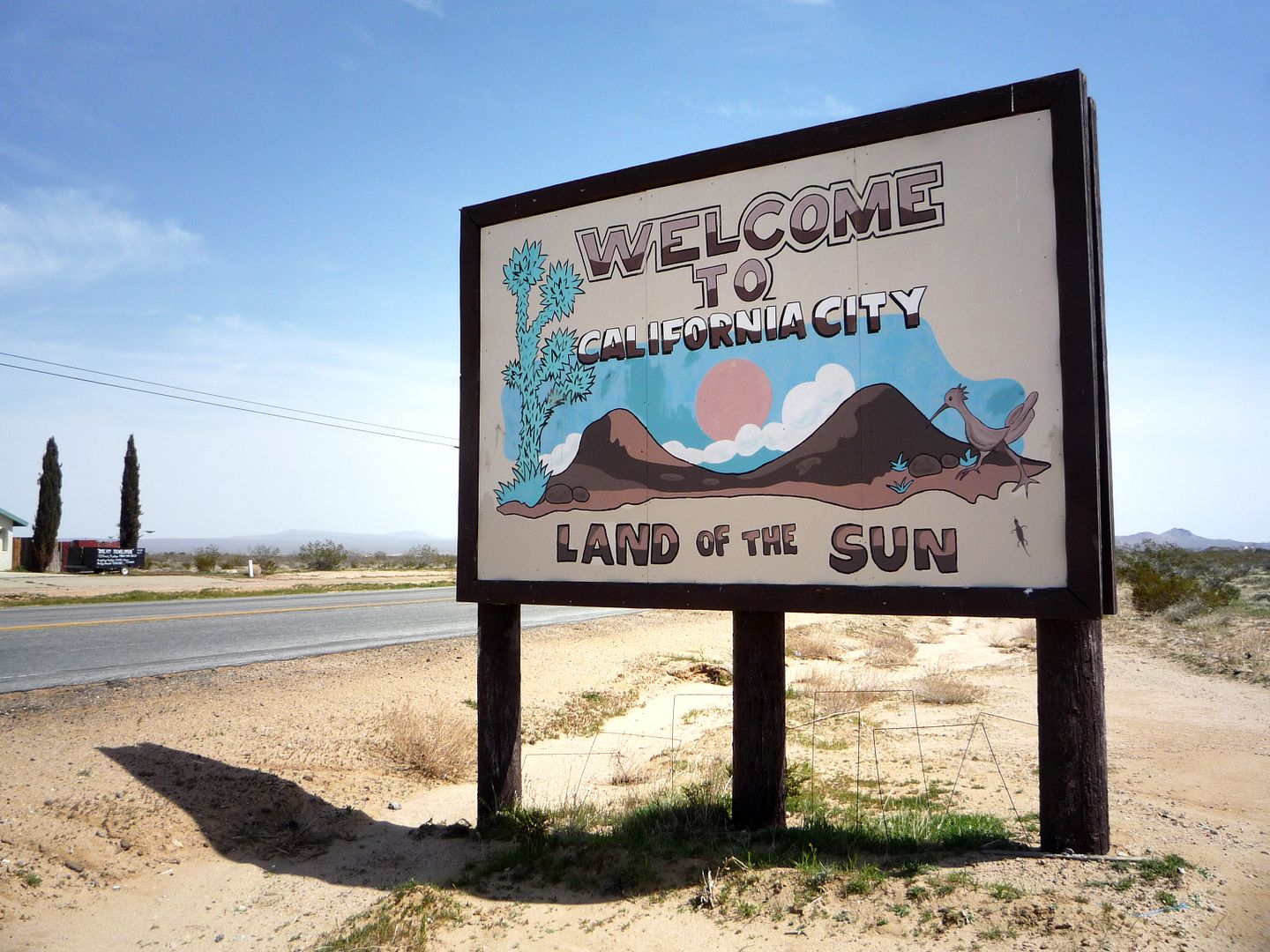
After all, there's not a whole lot there.
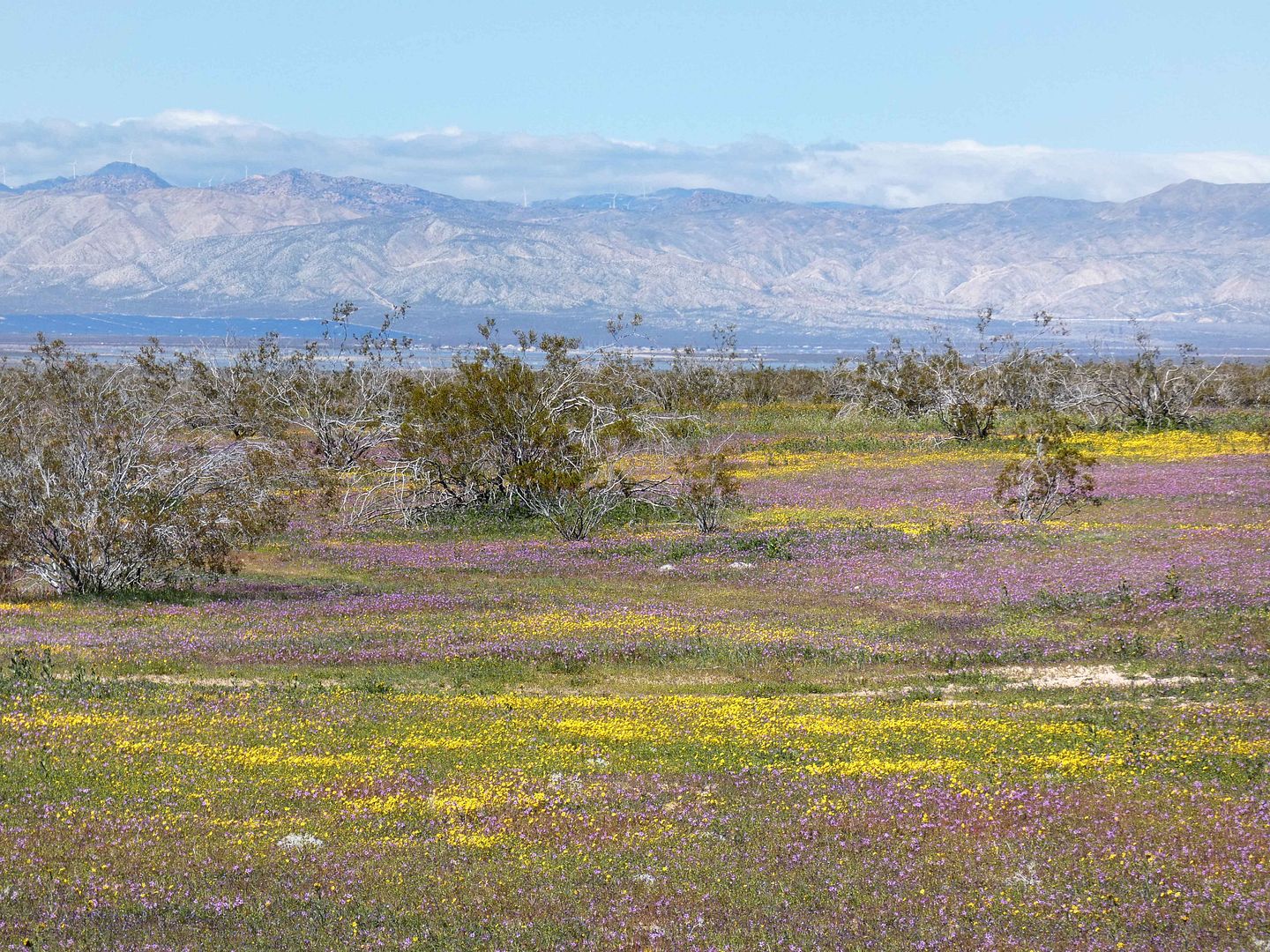
But on a clear Saturday morning after the wettest winter weather I've experienced since moving to Southern California in 2011, it seemed like a good idea to drive a couple of hours north to the Mojave Desert...
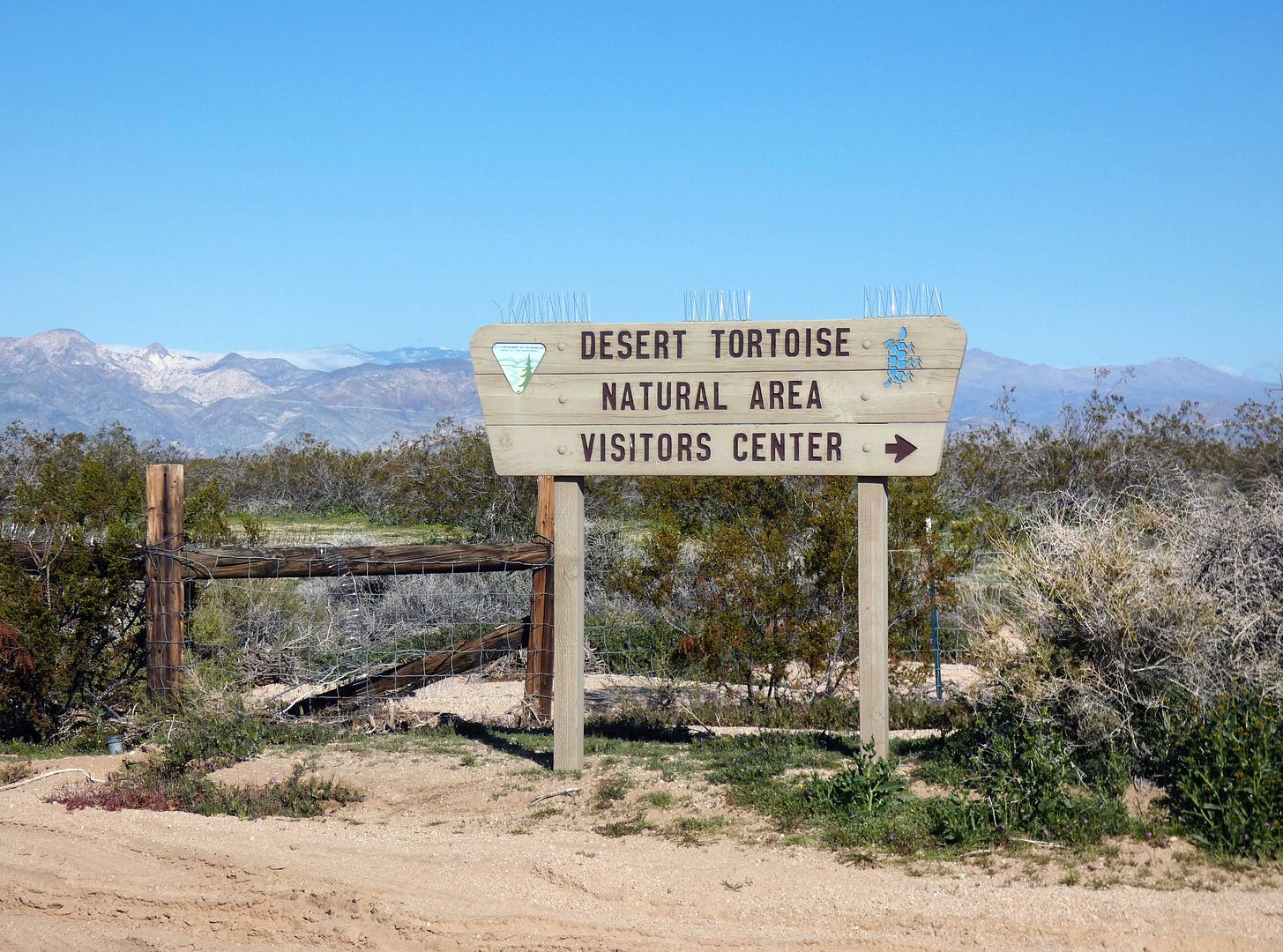

I'd been daunted by the dirt roads, the not knowing exactly where to go or what I'd find when I got there...
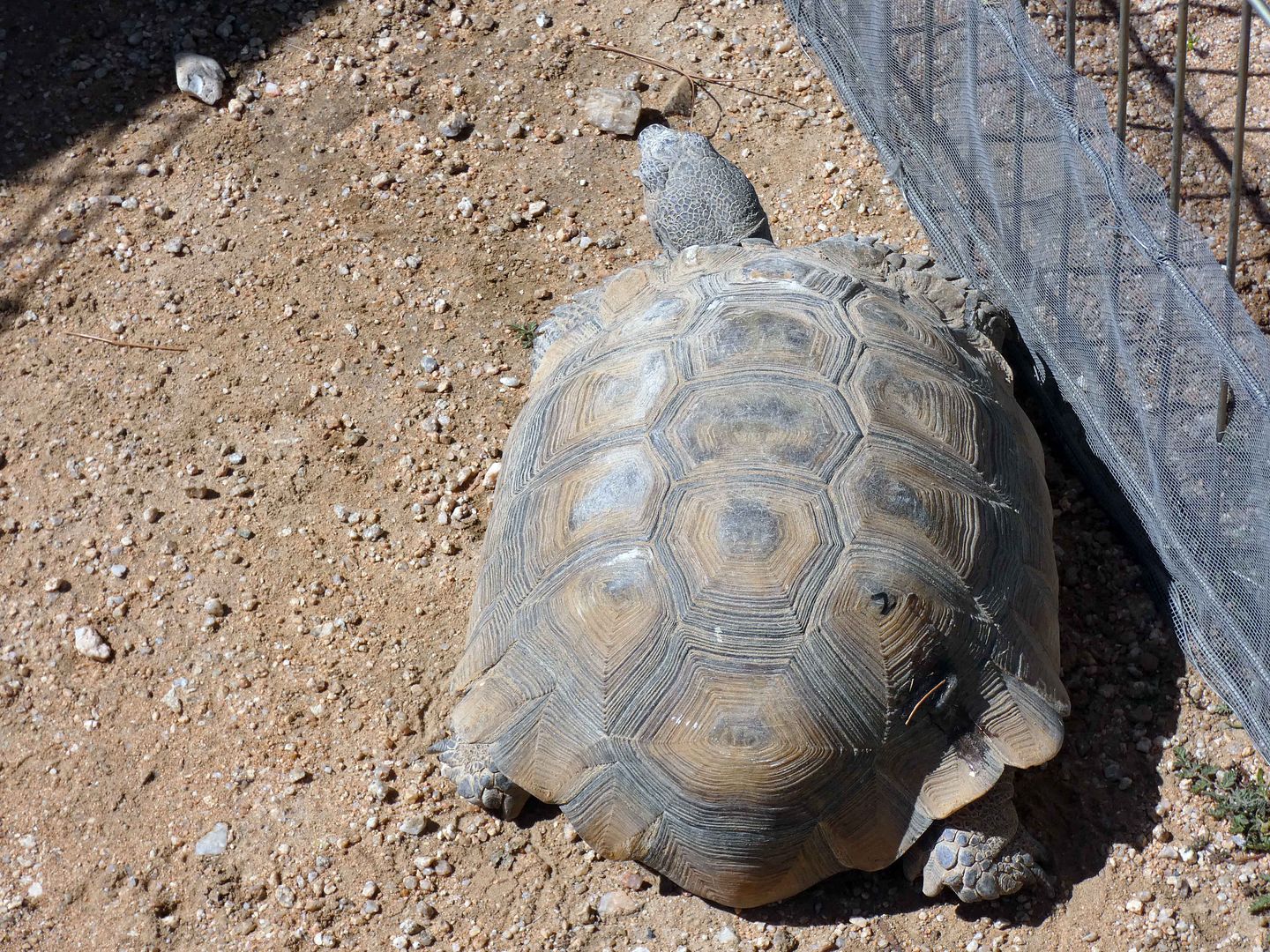
...but the event listing promised meet and greets with actual desert tortoises, which I figured would be more than I'd find out there on my own.
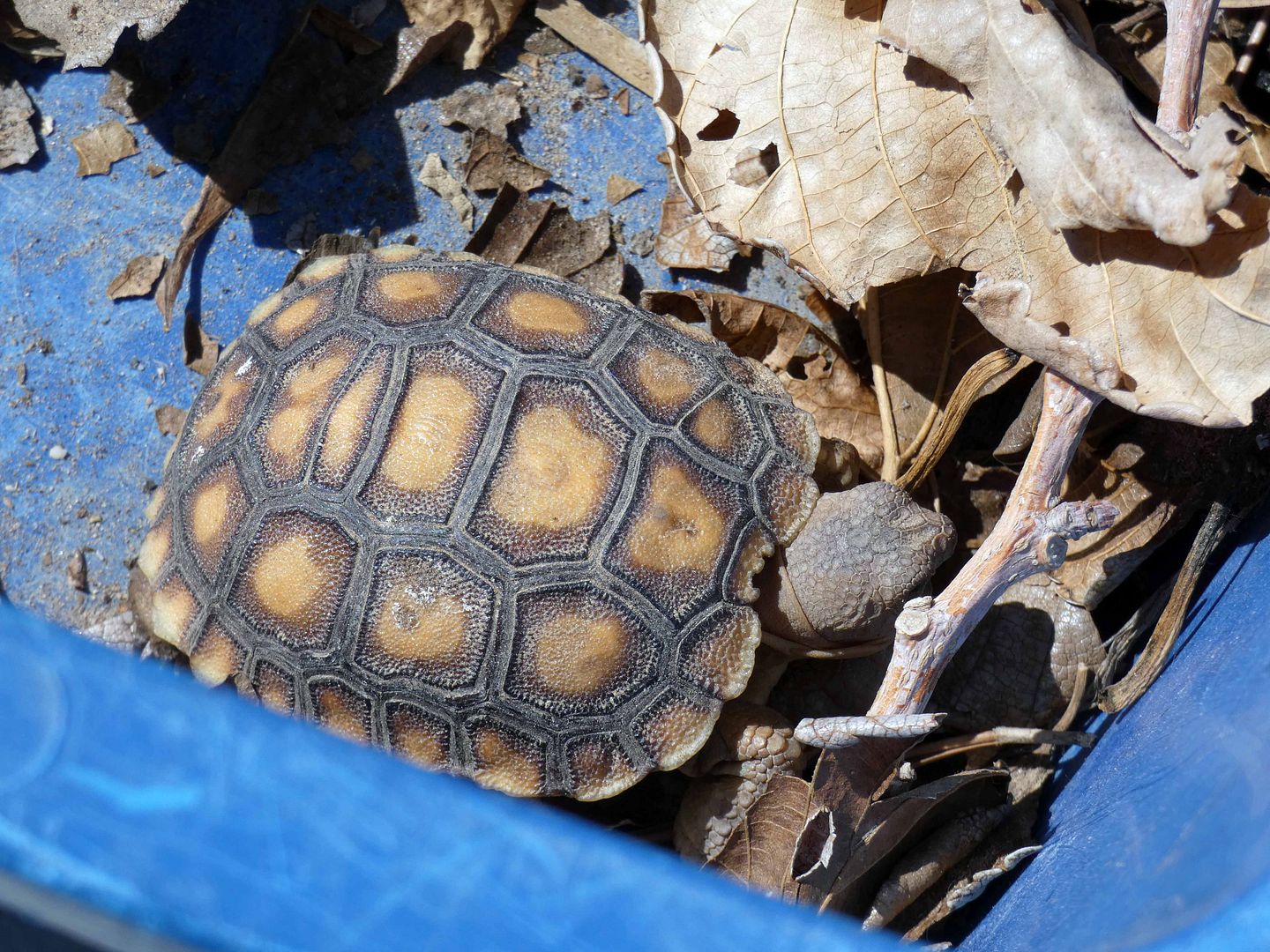
There's an adoption program for tortoises who, for one reason or another, wouldn't survive out in the wild on their own—from itty bitty ones (just a year or two old) to the big adults (anywhere from 30 to 50 years old, although they can live to 80).
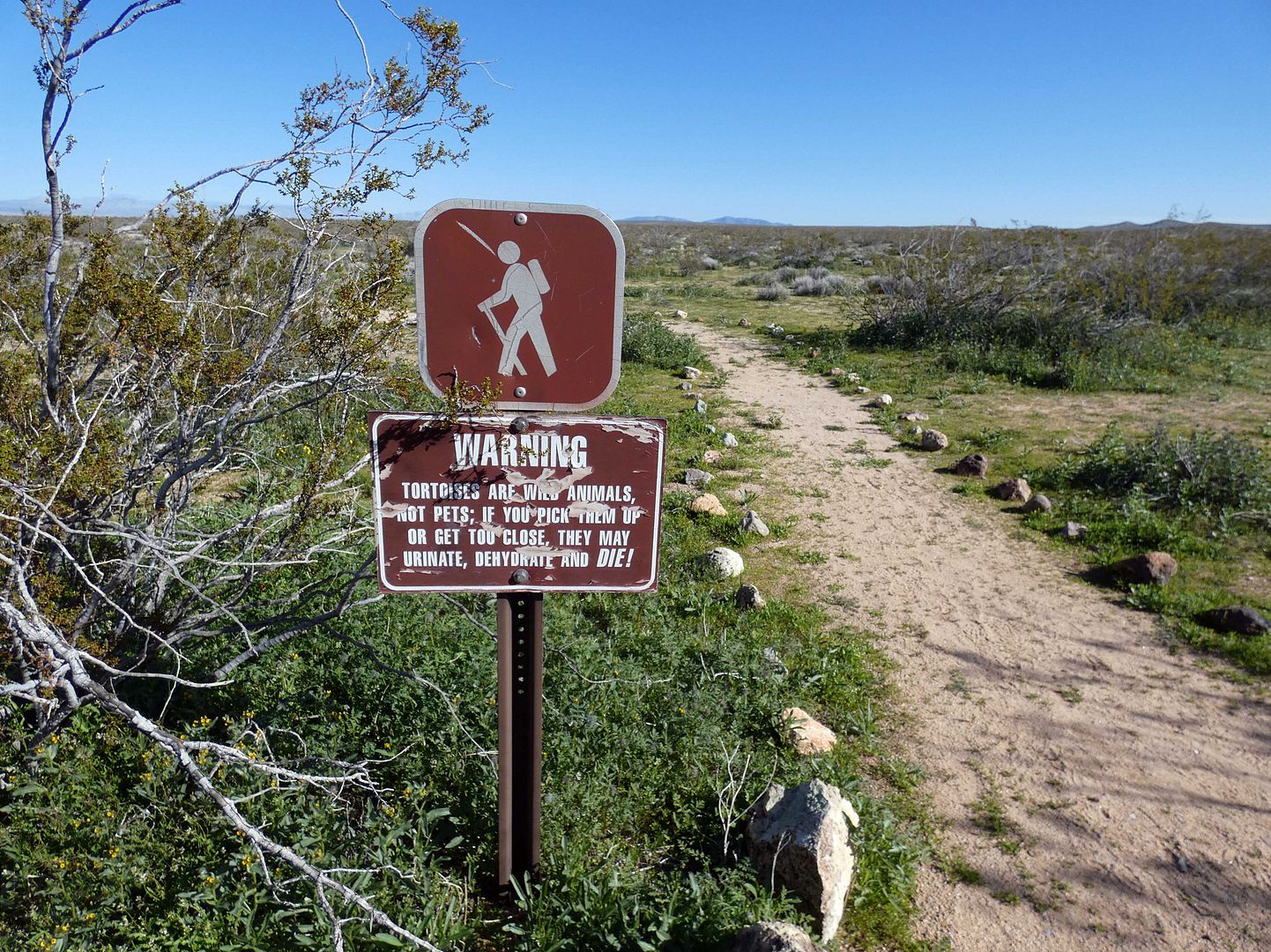
The preservation of the desert tortoise and its habitat in this area—more than 40 square miles—has been a joint effort primarily between the Bureau of Land Management, California Department of Fish and Game (now Wildlife), Desert Tortoise Preserve Committee (founded in 1974), and The Nature Conservancy.
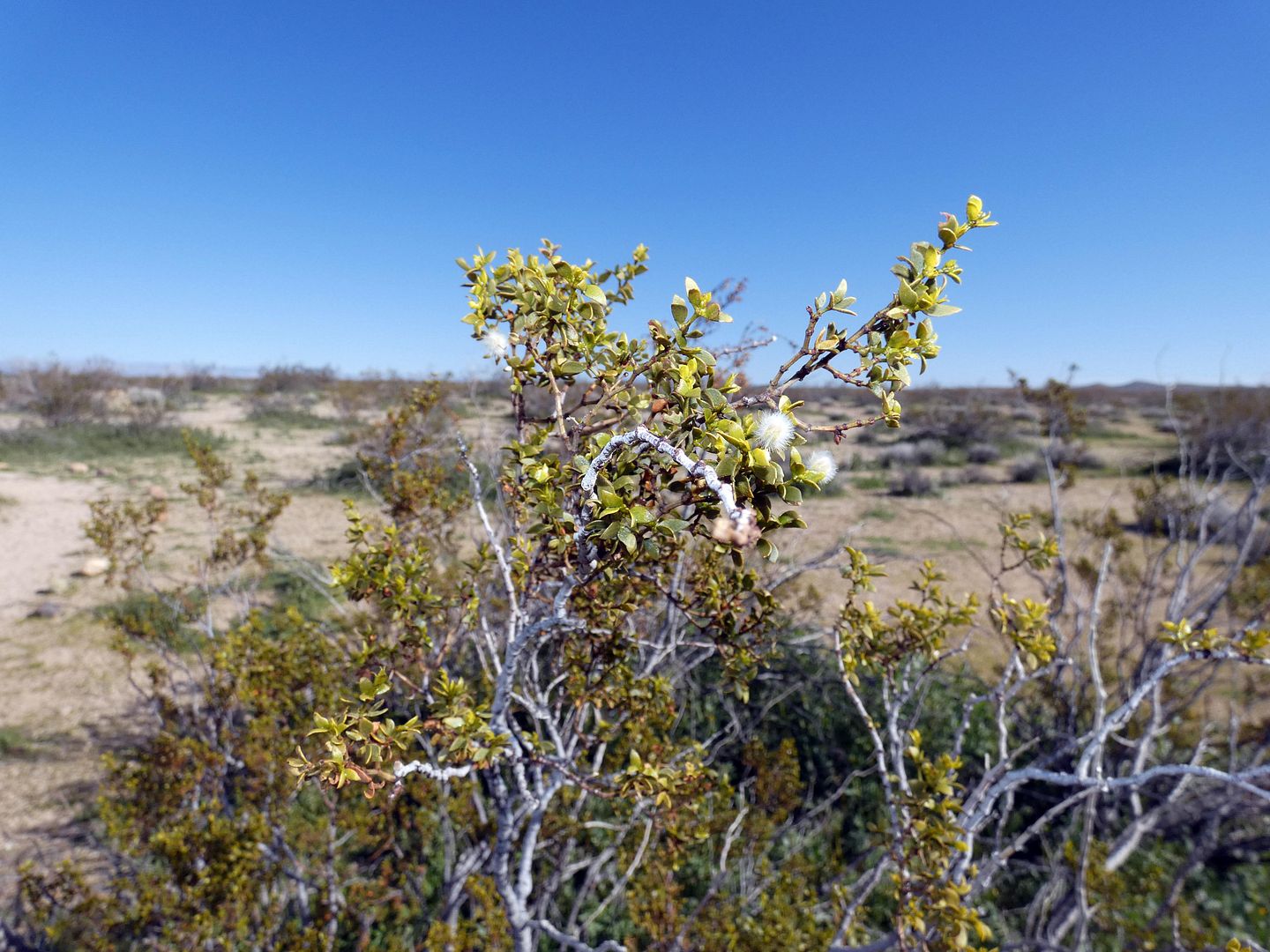 creosote
creosoteThe current preserve is surrounded by OHV trails—but it's been fenced in since 1979, protecting it from vehicular traffic.
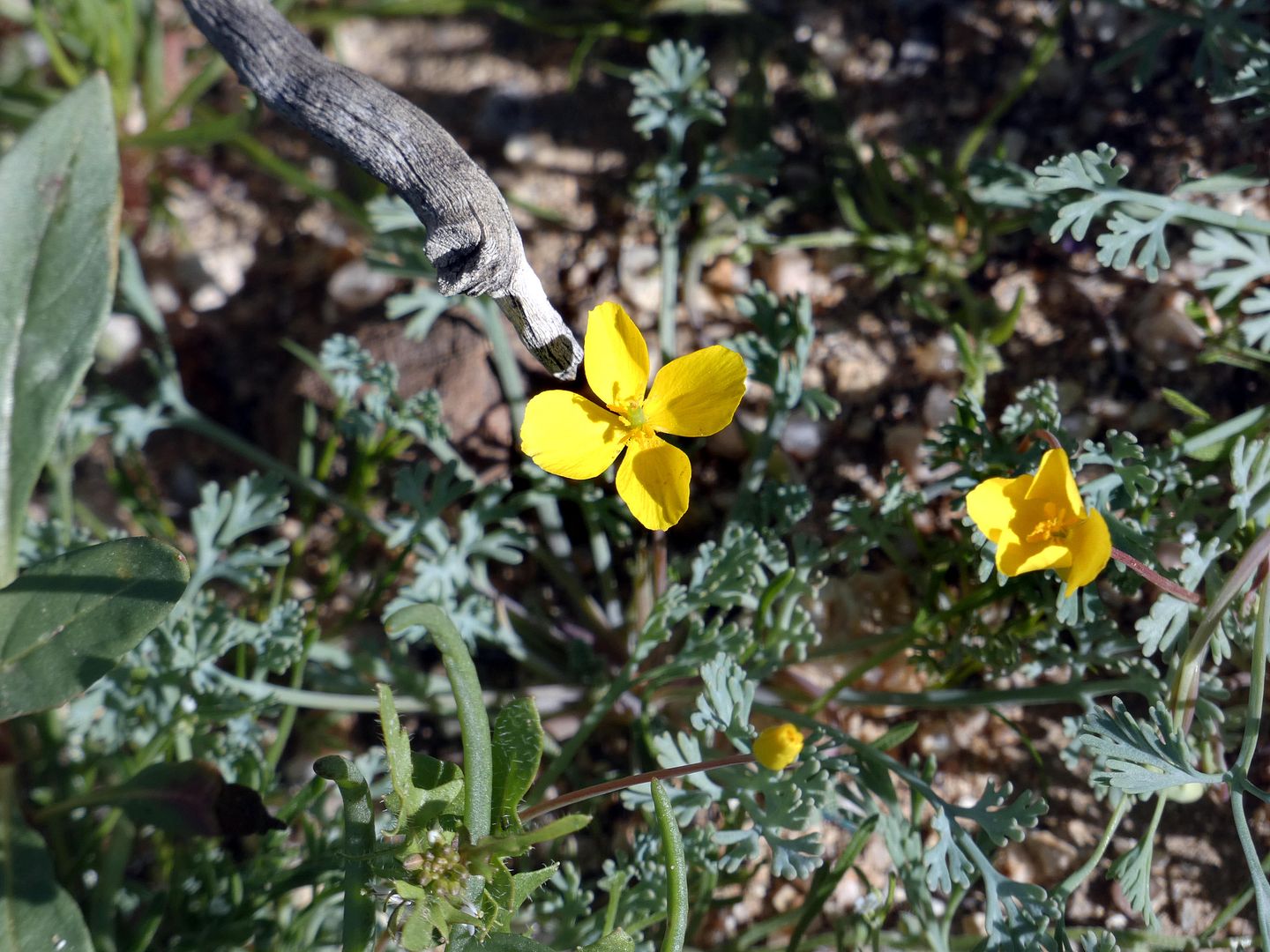
bush poppy or little gold poppy?
Much of the area was used for sheep grazing until 1993. There were lots of plans to try to mine for minerals here.
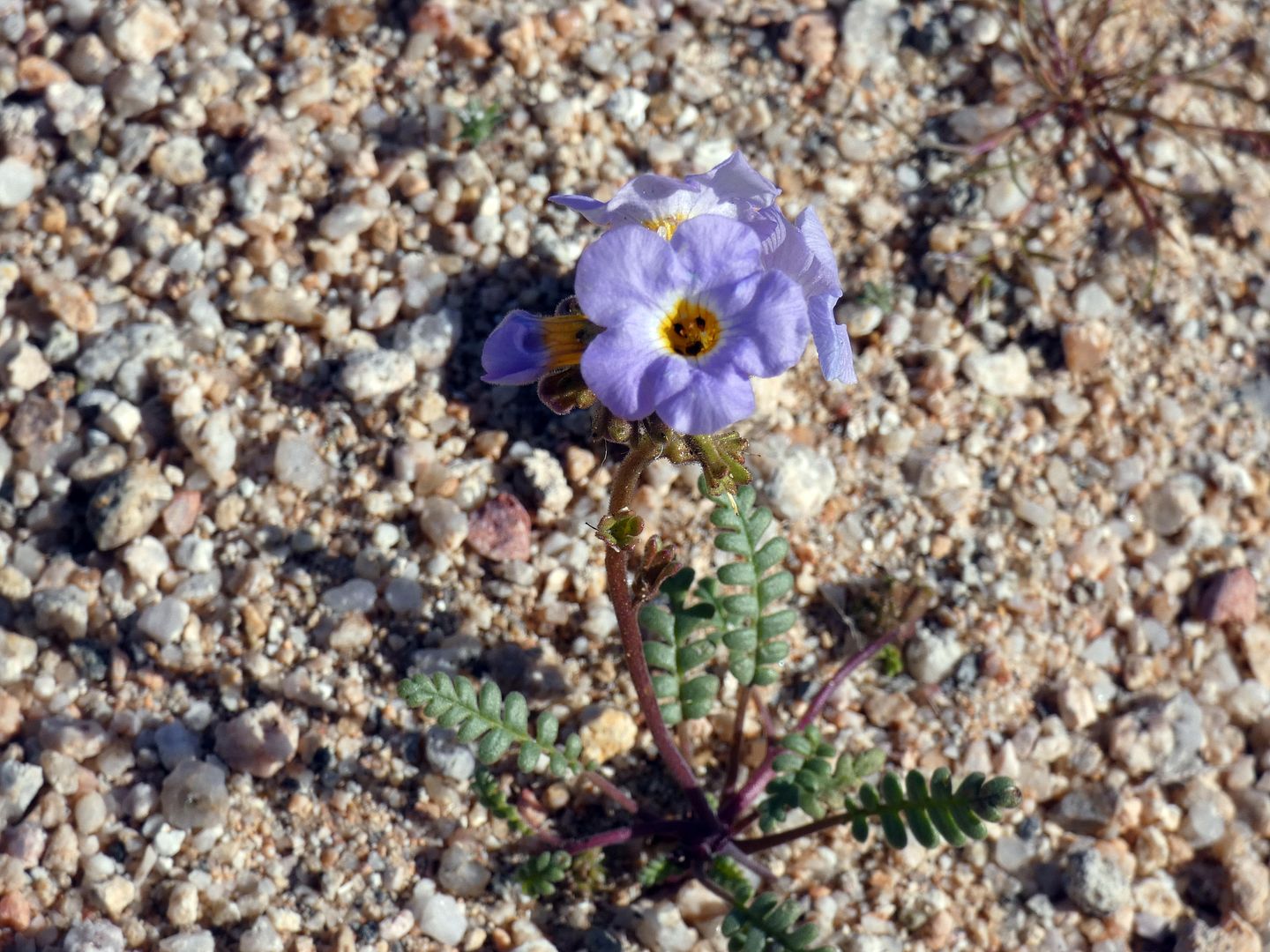 Fremont's phacelia
Fremont's phaceliaBut through a patchwork of private land acquisitions and transferals of ownership, piece by piece and bit by bit, this section of the Mojave Desert has been returned to a more "natural" state—which is probably why this is one of the few (if not only) places where desert tortoise populations are actually increasing.
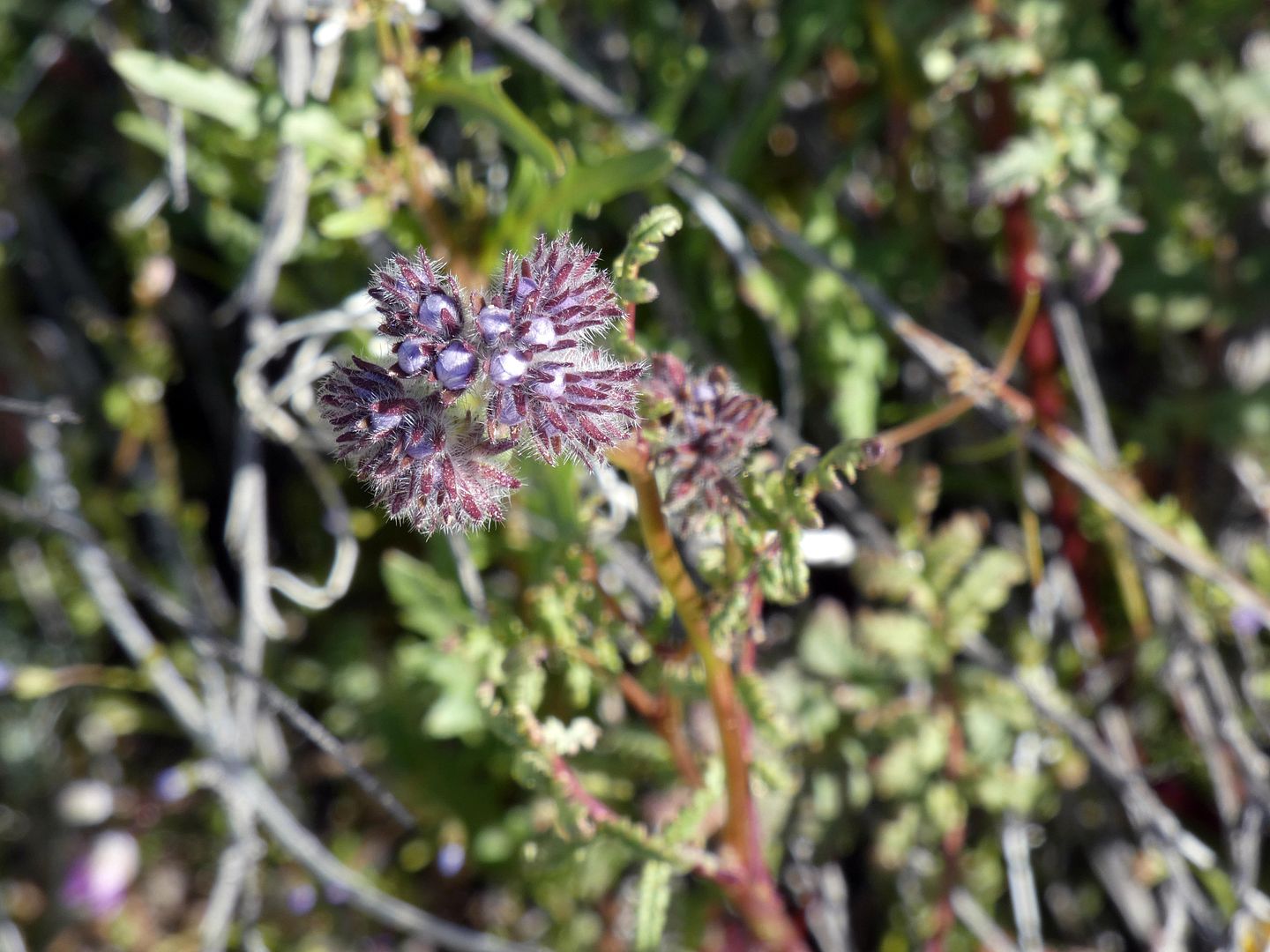
But there are still more parcels to buy in this "Area of Critical Environmental Concern"—and there's still more research on the tortoise to be conducted in this designated "Research Natural Area."
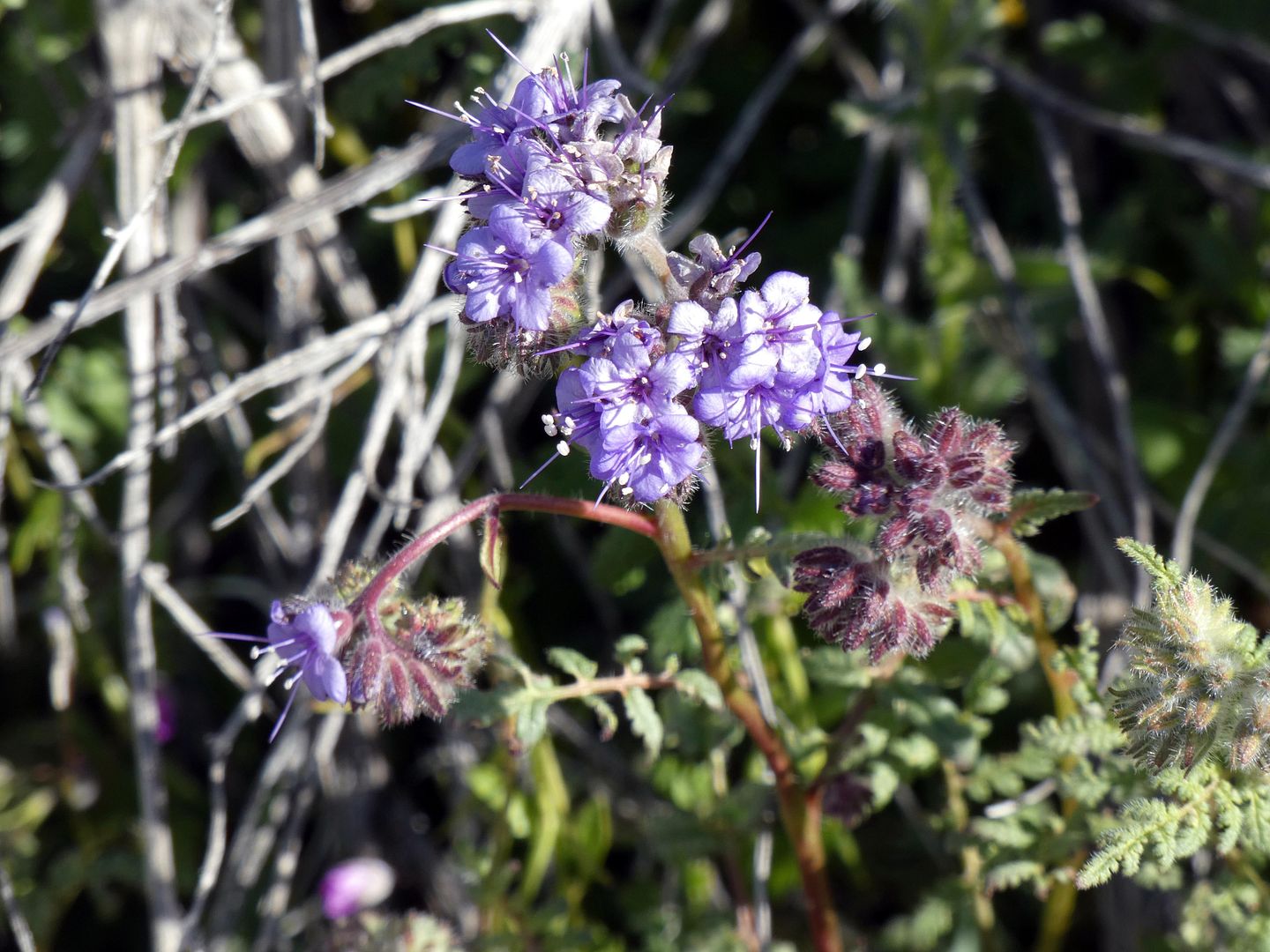
Desert tortoises have a lot of odds stacked against them—for instance, not breeding until they're 15 to 20 years old, their eggs vulnerable to predation by hungry ravens. On a federal and state level, they're considered a "threatened" species (although there's a movement to increase their threat level one notch to "endangered").
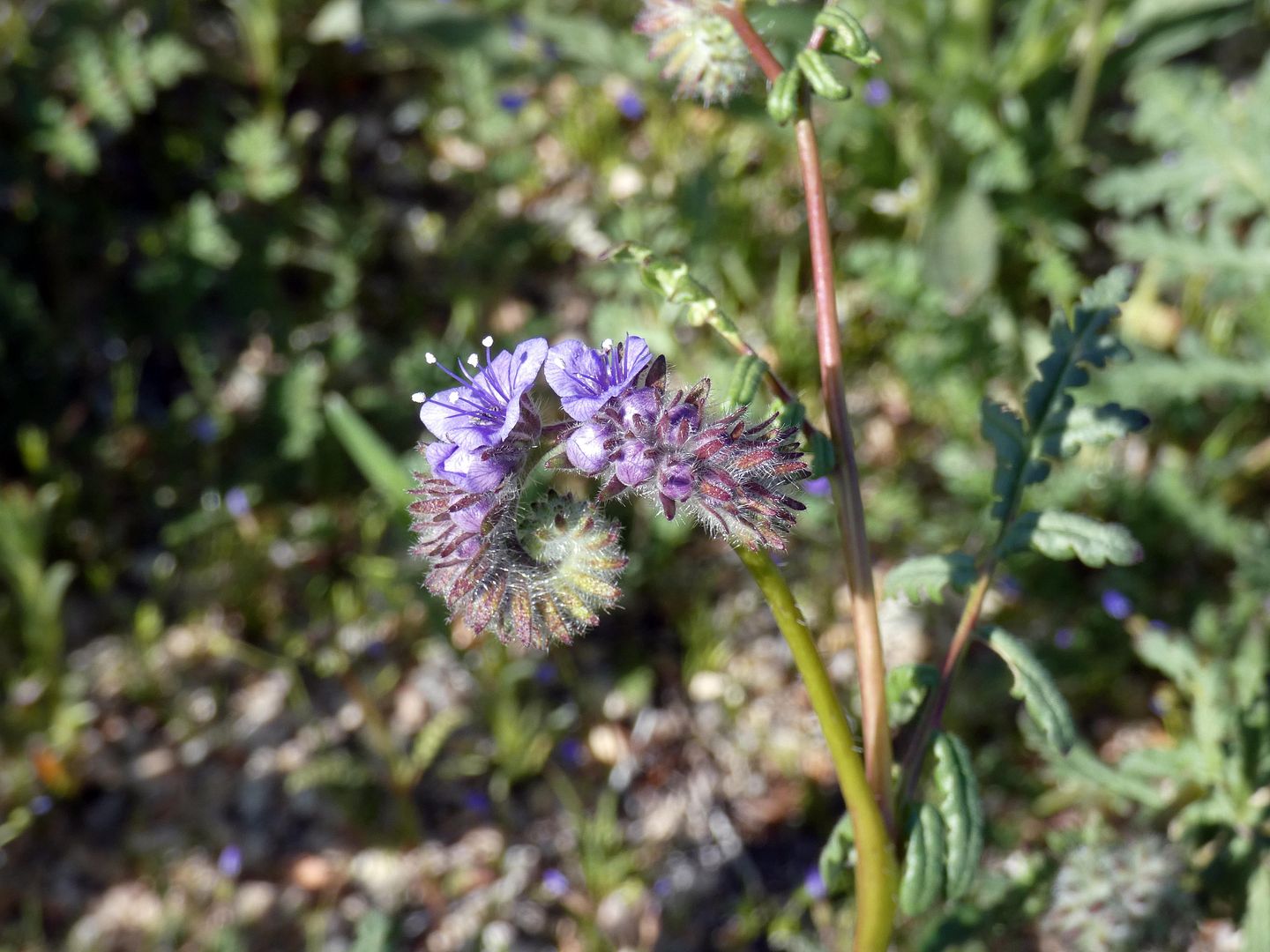
But clearly, this preserve is doing something right.

During my visit, I walked three of the four loops: the Main Loop, the Plant Loop, and the Animal Loop. (I never found a fourth loop.)
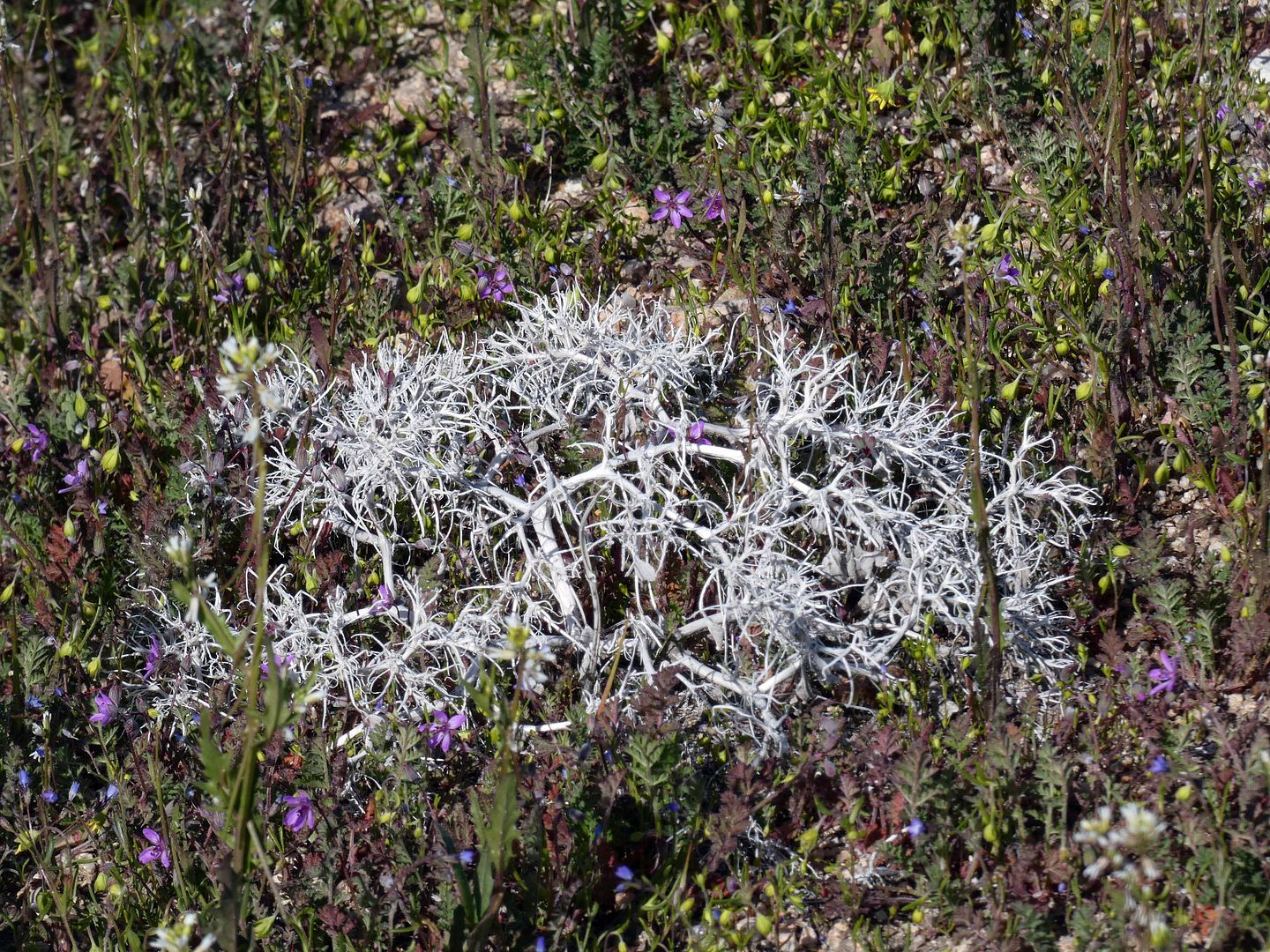
There are over 200 species of plants at the Desert Tortoise Research Natural Area—many of which provides either food or habitat/shelter (or both) for the tortoises.
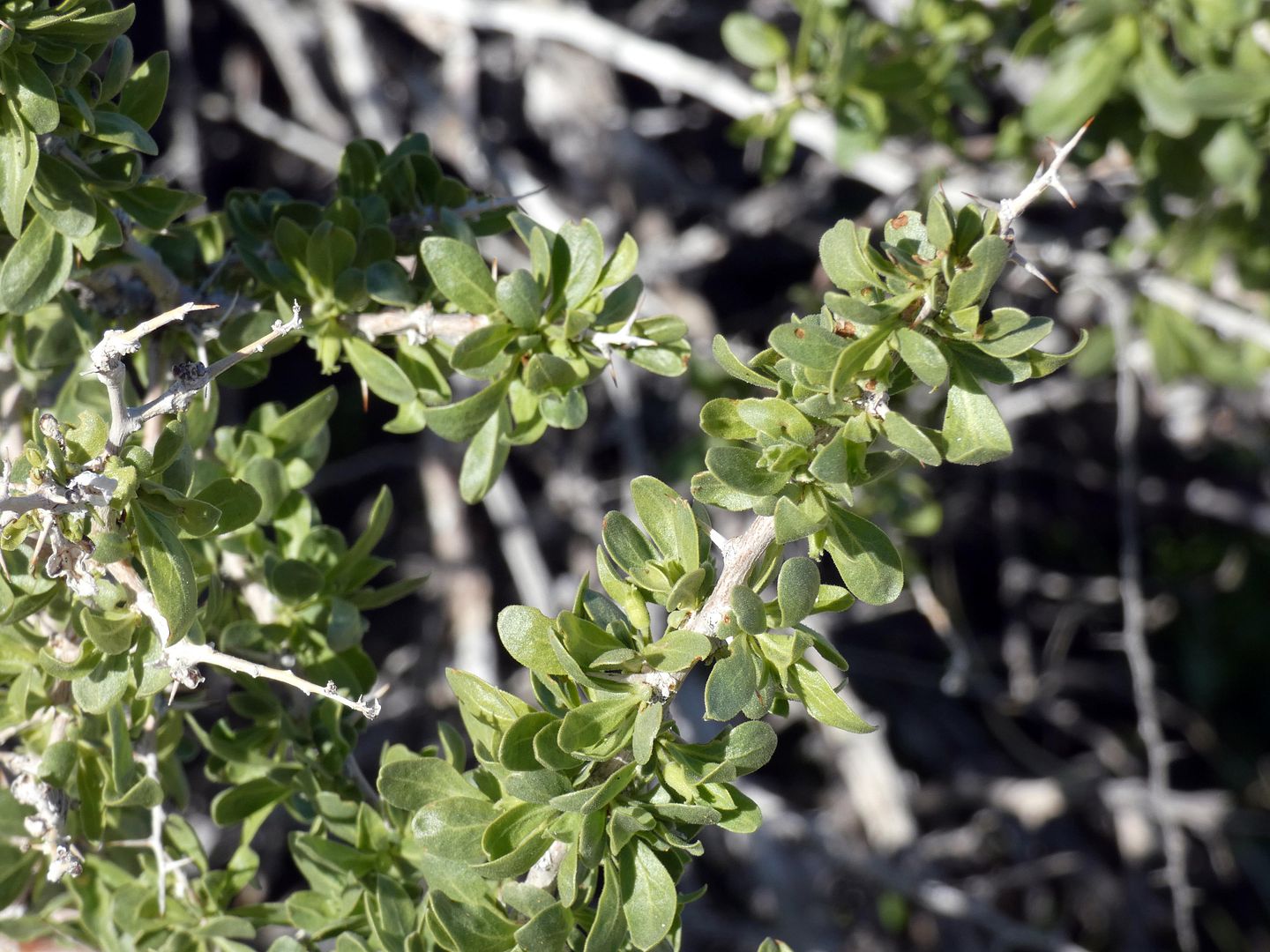
Other plants, like the peach thorn (Lycium cooperi), help sustain other desert wildlife, like birds.
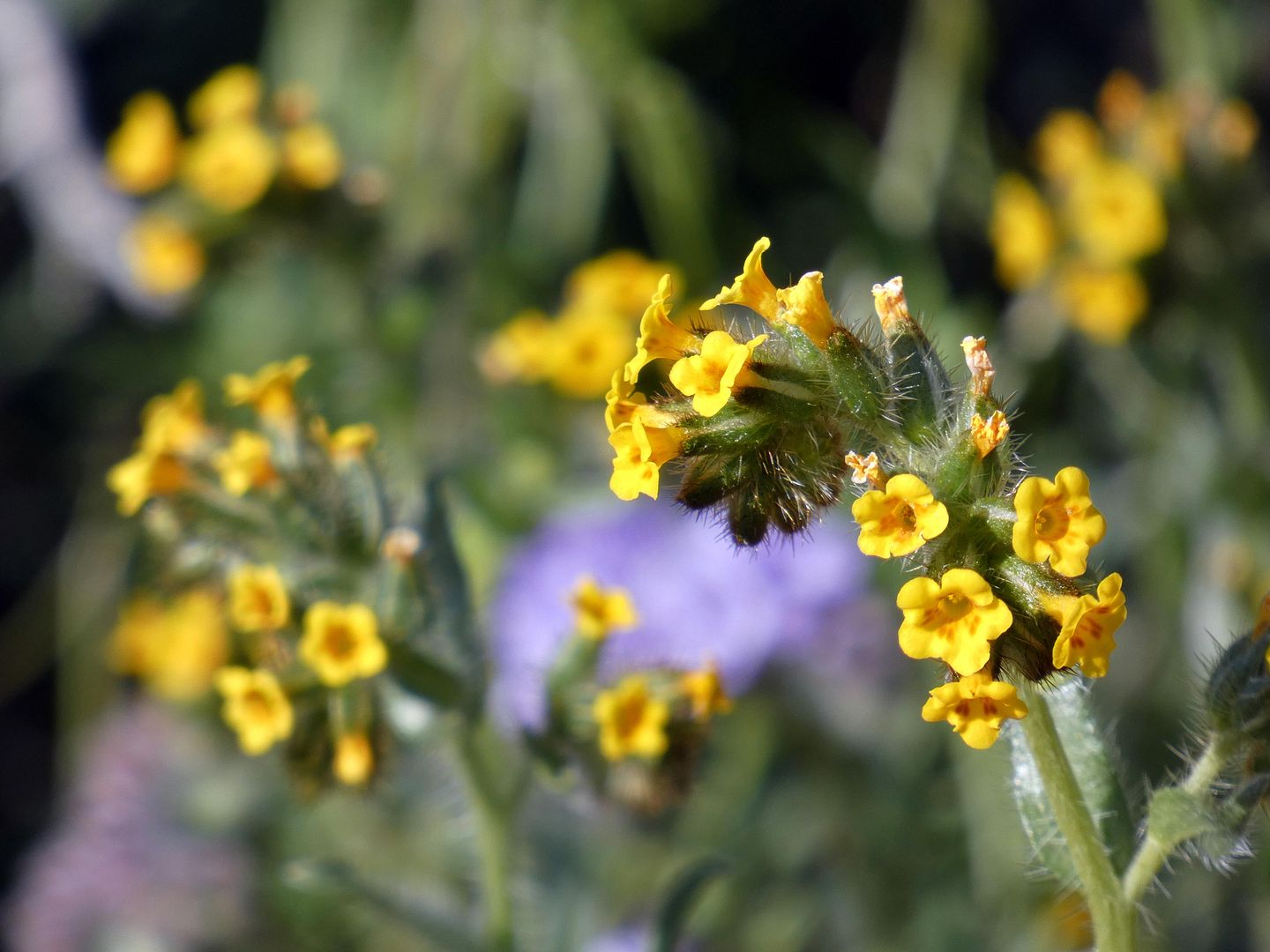
And it was a good time to visit, with so many spring wildflowers already in bloom, like yellow fiddlenecks...
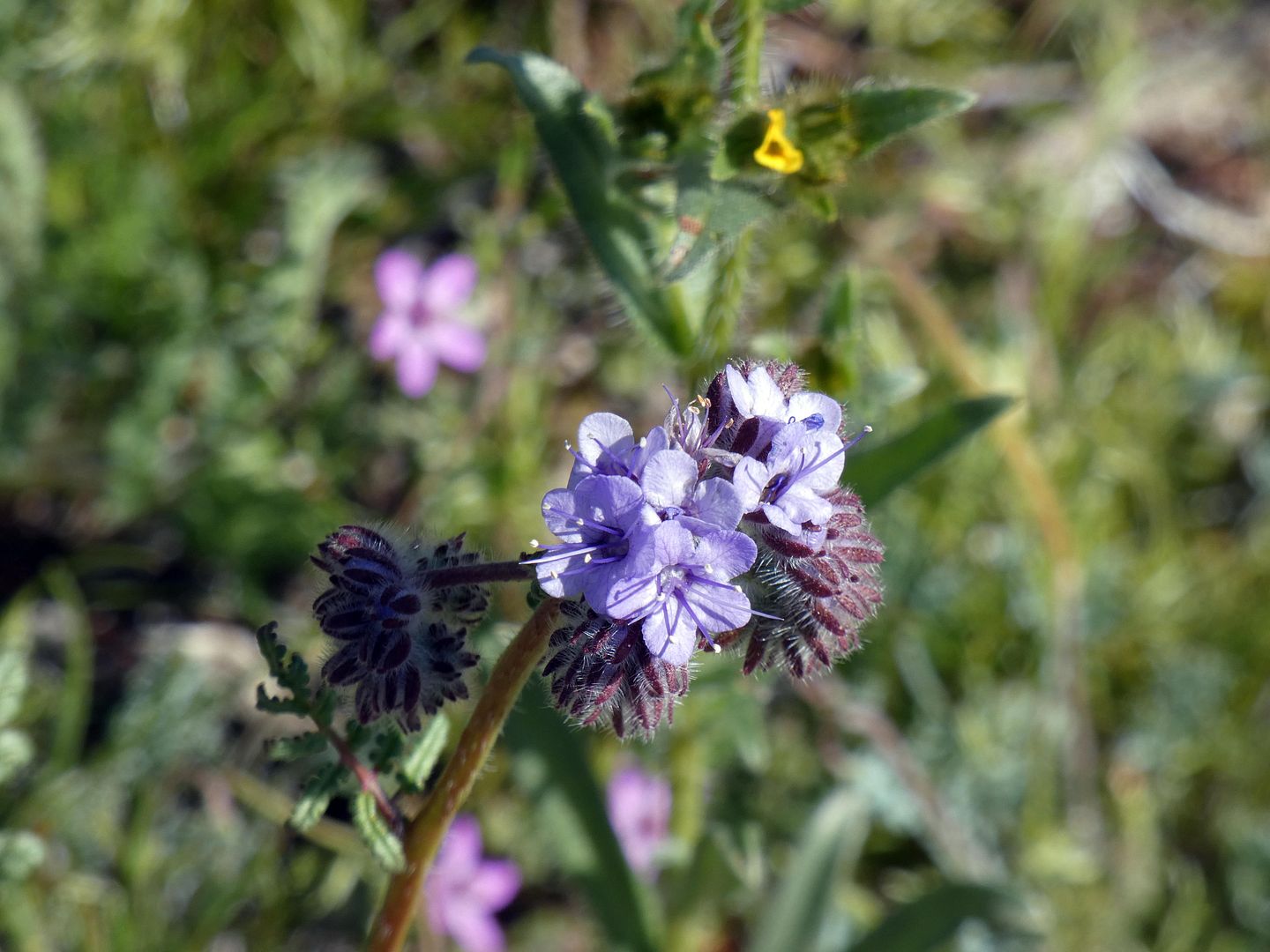
...lacy phacelia...
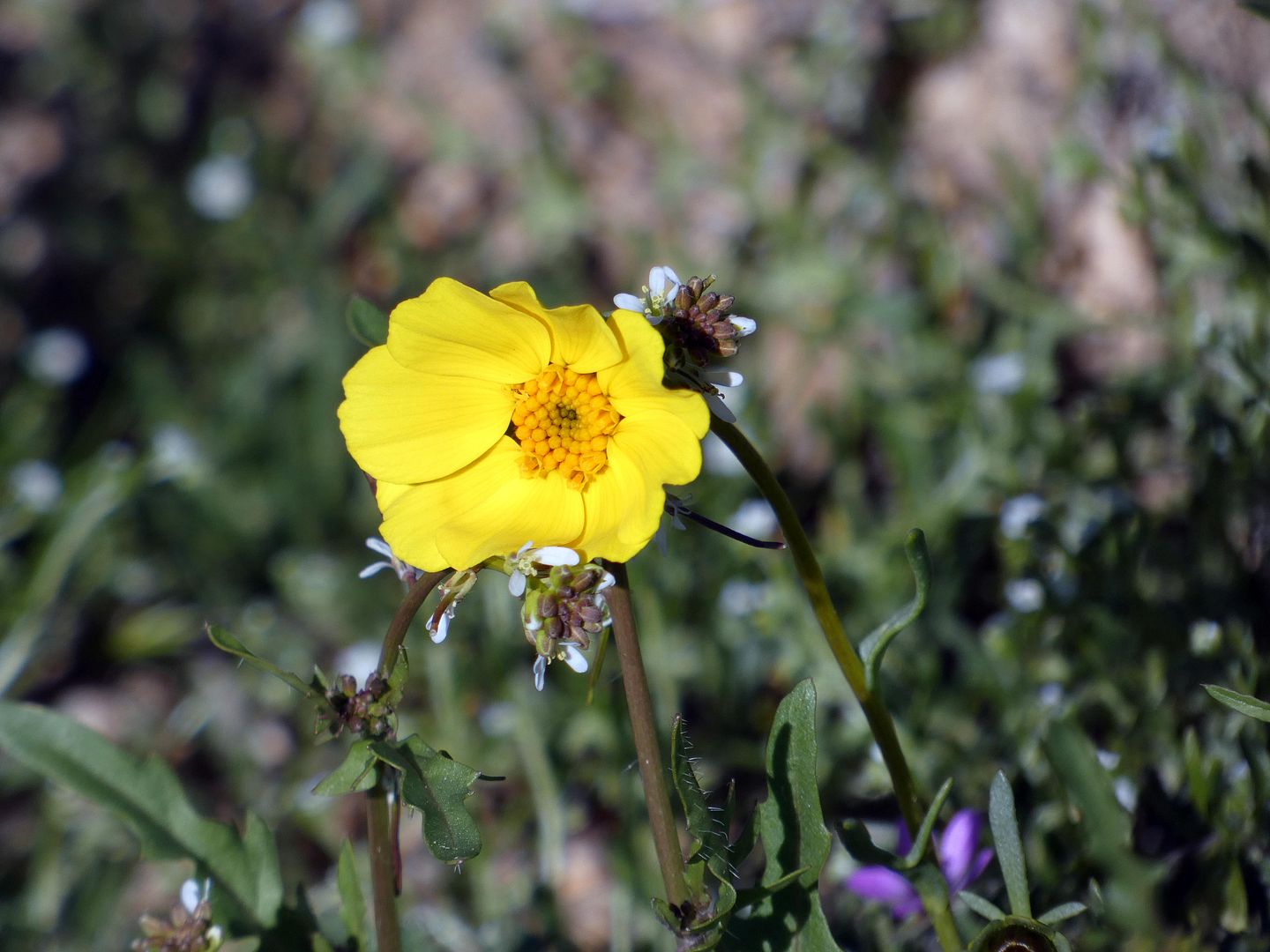
...leafy-stemmed coreopsis...
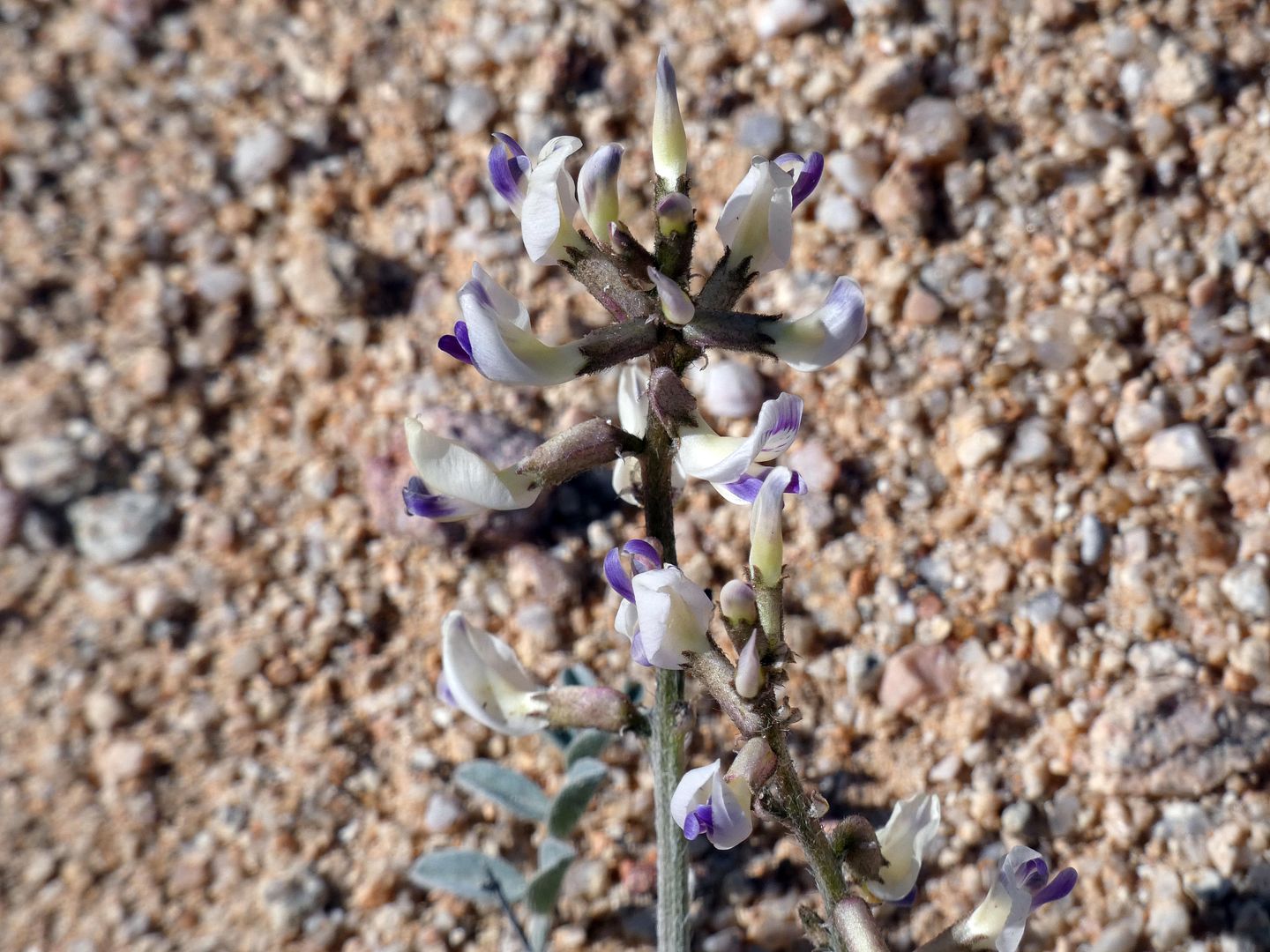
...and Layne locoweed (a tortoise favorite).
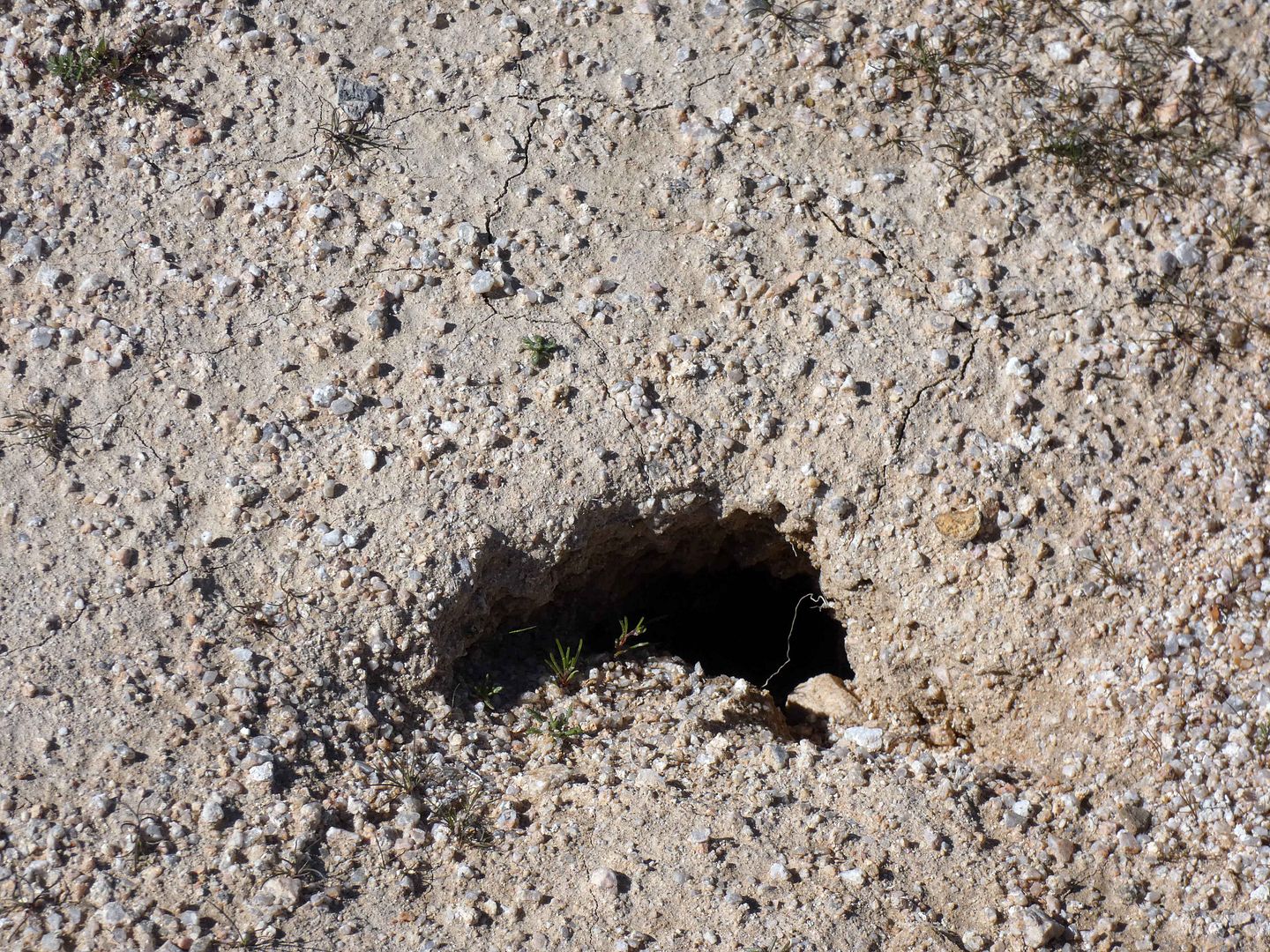
Although, true to my suspicions, I didn't see any tortoises out on my hike (and, in fact, have only ever seen one out in the wild), I did find a tortoise-shaped hole which I suppose must be a burrow for a little one. (That being said, there are plenty of animals that like to occupy vacant burrows, not the least of which is the burrowing owl, which is also found at the desert tortoise preserve.)
Related Posts:

No comments:
Post a Comment